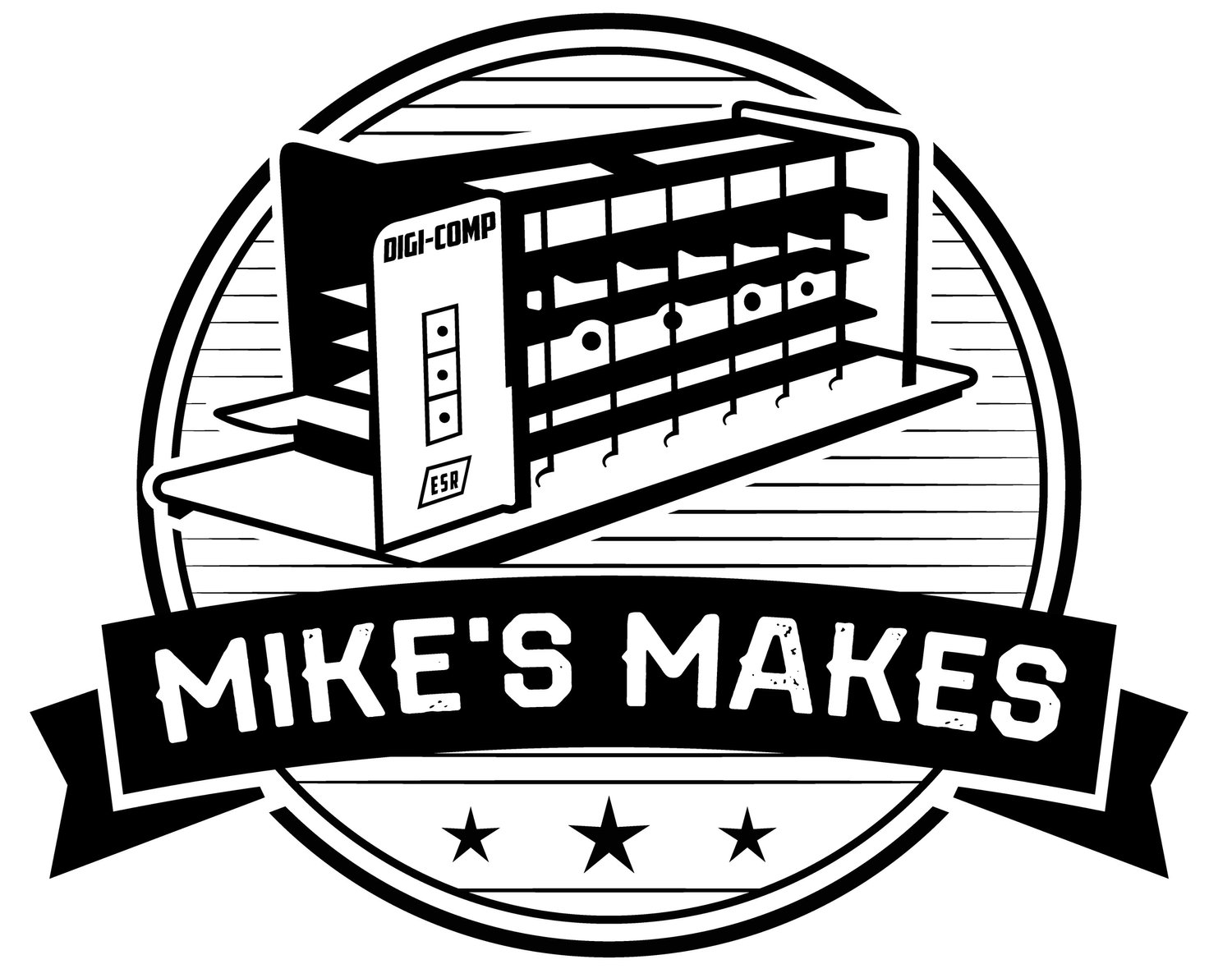Digi-Comp II
My Digi-Comp II reproduction. To the left is a reprint of the excellent instruction manual that shipped with the original.
Manufactured By: E.S.R., Inc.
Designed By: John Thomas Godfrey
Release Date: 1968
As can be seen in the picture, a Digi-Comp II consists of a frame (about 14 by 28 inches) propped up at an angle. Computations are performed by balls rolling down channels on the top of and inside the platform through gates. Some gates are fixed switches that merely redirect the ball down a particular channel while others are flip-flops that both redirect the ball and change the state of the flip-flop in the process.
Intended as an aid for teaching computer concepts, the Digi-Comp II can count, perform basic arithmetic, and obtain either the "1's" or “2's" complement of a number. The device can be run in auto mode where the balls are released automatically after each step of an operation until the operation is complete, or in manual mode where the user initiates each step.
Here I have made a full size working replica of that Digi-Comp II from 5 decades ago. I tried to make it as authentic as possible based on the images and technologies that I had available to me. The original top and inside decks for instance were vacuformed plastic attached to pieces of masonite board, and the flip-flops and switches were injection molded. In my replica the decks and pieces are all 3D printed. Also I did not have an original Digi-Comp II to work from. I am indebted again to Jaap Scherphuis for his invaluable assistance in providing me with good quality images. Finally I did modify the design of some of the flip-flops (that are not visible when operating the device) to improve their reliability.
This build was much more challenging than any of the projects I had tackled so far, but from an implementation point of view it wasn’t that different than The Amazing Dr. Nim, just way bigger and more complex. Fortunately I had just retired prior to starting this project so had lots of free time.
At 14 x 28 inches the Digi-Comp II top piece presented a first time problem for me. How do I split this up into pieces that will fit onto my printer? I found that the free Windows 3D Builder does an excellent job of this. It’s “split” feature is easy to use and does a great job of ensuring that the resulting pieces maintain their printing integrity. So I printed the top as 8 individual pieces and rejoined them as part of the final construction.
Not everything was 3D printed. This project allowed me to brush up on other fabrication skills like wood working, painting, and wire bending. The whole build took about three months to complete. Time well spent IMHO.




